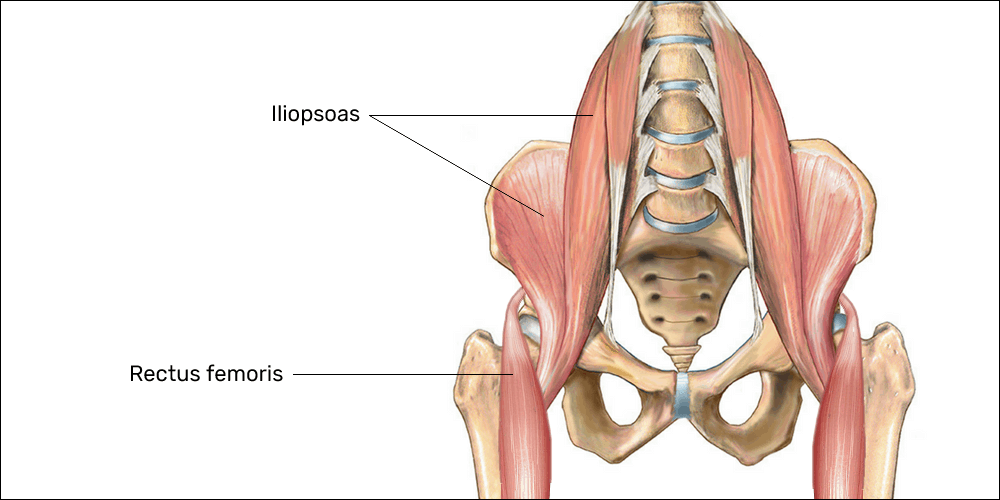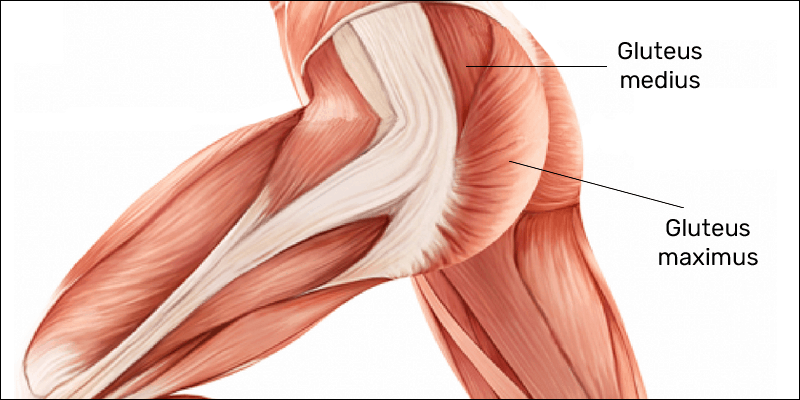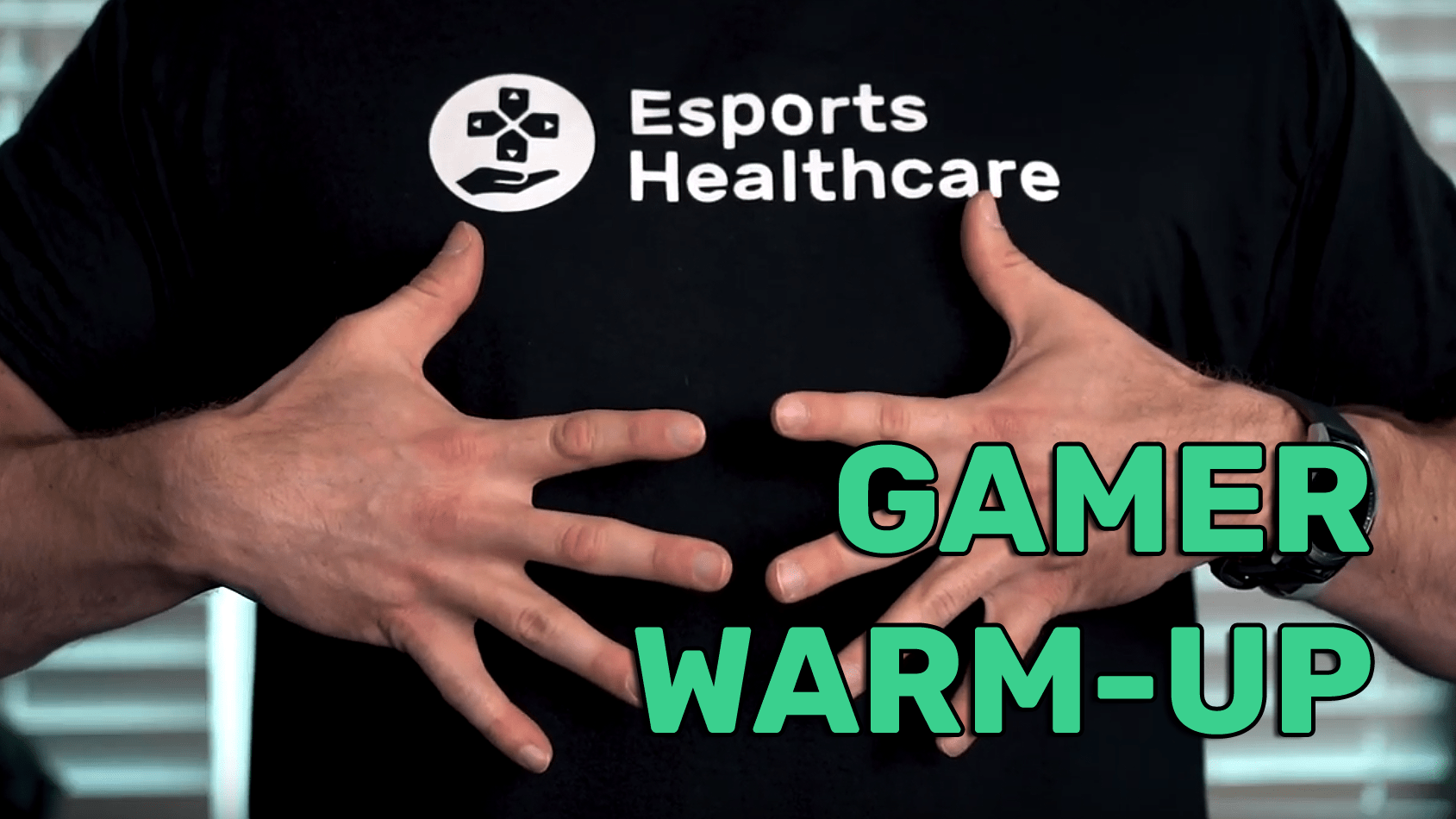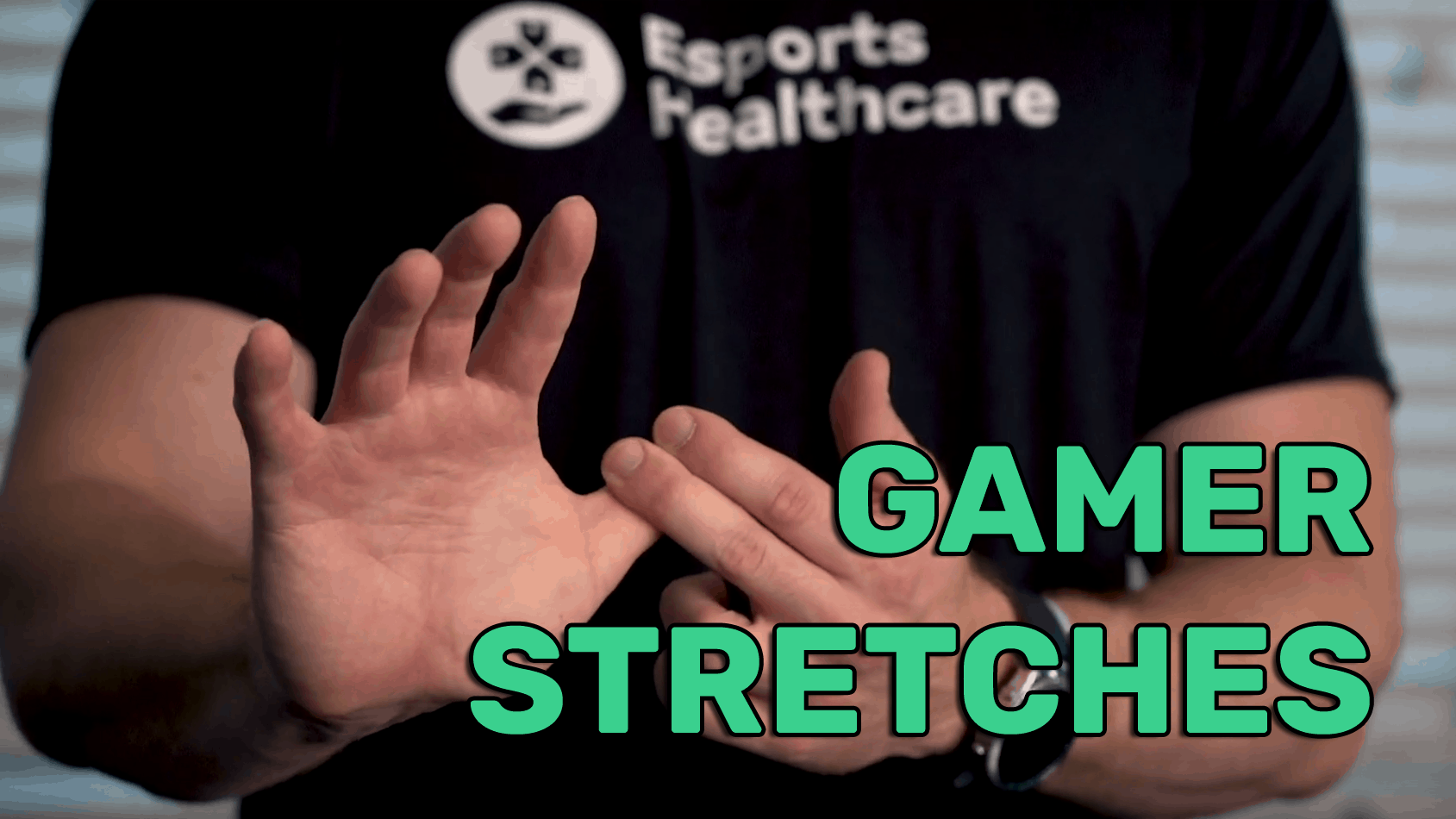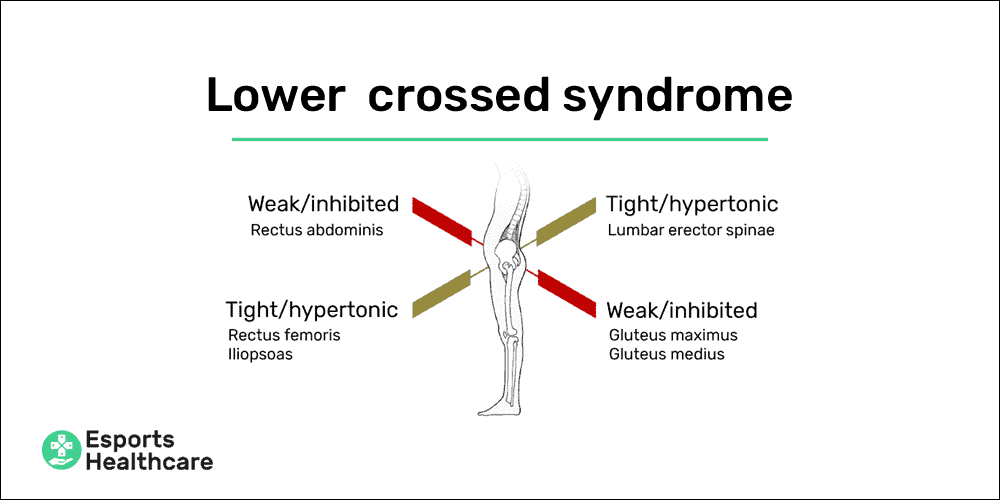Lower Back Pain From Gaming, Simplified
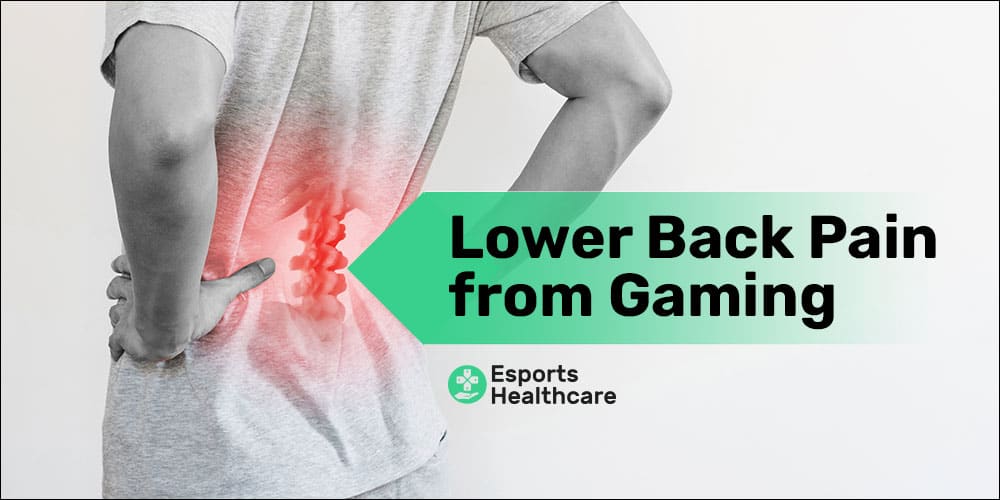
Key points
Disclaimer
This information is for educational purposes only and is not intended to replace the advice of your doctor. Esports Healthcare disclaims any liability for the decisions you make based on this information.
The information contained on this website does not establish, nor does it imply, doctor-patient relationship. Esports Healthcare does not offer this information for diagnostic purposes. A diagnosis must not be assumed based on the information provided.
Lower back pain from gaming is an extremely common ailment. In fact, lower back pain is the number one cause of both doctor’s visits and time off from work in the United States. Lower back pain is a complicated ailment with many causes—each of which will affect different tissue(s). Below we will discuss the anatomy of the lower back as well as common causes, symptoms, and conditions.
Pertinent anatomy
In order to better understand lower back pain from gaming, it’s important to know some basic anatomy of the spine and surrounding regions.
Bony anatomy of the lower back
To begin, the region of the lower back is known as the lumbar spine. In normal anatomy, there are 5 vertebrae—listed in descending order as L1 through L5 (where the letter “L” identifies the lumbar spine).
Unlike the joints of your arms and legs, the joints of the spine do not have common names that differ from their anatomical names (e.g., “hip” is the common term for the femoroacetabular joint). Instead, when describing joints of the spine, we simply list the adjacent segments (e.g., L1-L2 or L4-L5).
Additionally, the base bone of the spinal column—the sacrum—articulates with the last lumbar vertebra, L5. And, despite not technically being part of the lower-back-proper (technically, the sacrum is part of the pelvic complex), the sacrum is nearly always included in discussions involving the lower back.
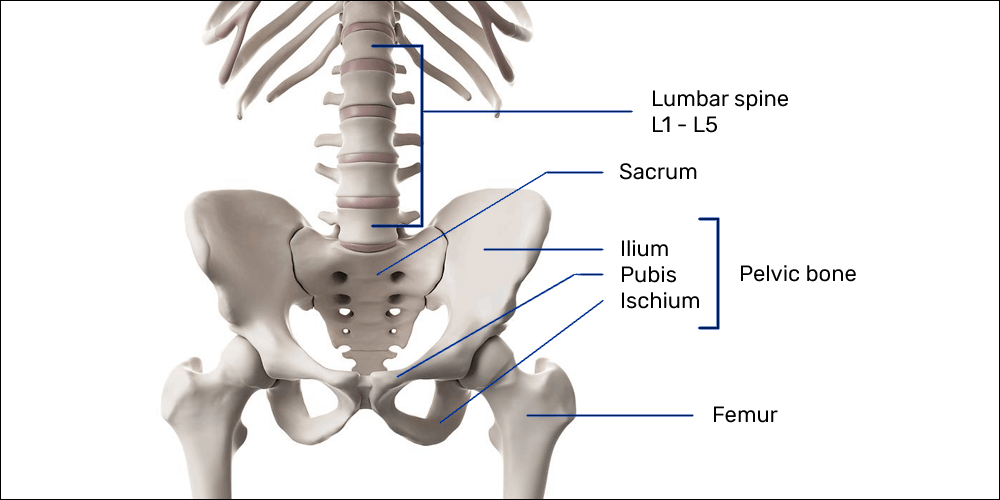
In addition to the sacrum, other non-lumbar bones that are important for this discussion include:
- Coccyx: the “tail-bone”
- Pelvis: two halves of the pelvis that articulate with one another (in the front) and the sacrum (in the back: see Sacroiliac joint dysfunction)
- Ilium: the back, upper portion of your pelvis; each ilium attaches to the sacrum in joints on either side known as the sacroiliac joints
- Ischium: the lower portion of your pelvis; these are the parts of the pelvis you sit on; in yoga, instructors often refer to these as the “sits bones”
- Pubis: the front portion of your pelvis; these bones attach to each other—a joint called the pubic symphysis
- Ilium: the back, upper portion of your pelvis; each ilium attaches to the sacrum in joints on either side known as the sacroiliac joints
- Femur: the thigh bone
Muscular anatomy of the lower back
Below, we’ve listed some of the most important muscles in the lower back, pelvic, and hip regions. There are many more muscles in the lower back than the few listed below; however, in practice, these muscles tend to be more common sites of pain and dysfunction.
- Erector spinae: the collective name for a group of powerful muscles responsible for keeping the spine in the upright position; these muscles may also assist in extension, lateral flexion, and rotation of the spine
- Hip flexors: a group of muscles that pull the thighs to the front of your body (e.g., knee-to-chest)
- Iliopsoas: a hip flexor muscle that has attachments from the inside of the pelvis to the femur
- Rectus femoris: a hip flexor muscle that attaches from the front of the pelvis to the tibia (shin bone; the rectus femoris muscle is part of the quadriceps muscle group)
- Iliopsoas: a hip flexor muscle that has attachments from the inside of the pelvis to the femur
- Gluteal muscles: a group of muscles that extend (e.g., climbing stairs) and abduct (e.g. side shuffling) your hip joints
- Gluteus maximus: the large muscle of your buttocks that extend your thigh (e.g., climbing stairs)
- Gluteus medius/minimus: the muscles on the upper/outer portion of your buttocks that pulls the thigh outward (e.g., side shuffling)
- Gluteus maximus: the large muscle of your buttocks that extend your thigh (e.g., climbing stairs)
- Quadratus lumborum: a square shaped muscle that attaches on the top of the pelvis, on the lower ribs, and on each vertebra in the lumbar spine.
- Core and abdominal muscles: muscles that surround the abdomen; core muscles are those that primarily stabilize and prevent movement of the lumbar spine, and abdominal muscles are those that primarily create movement of the lumbar spine. However, abdominal muscles may also contract statically to prevent movement and assist the core.
- Abdominal muscles
- Rectus abdominis: these are the “six-pack” muscles; they attach from the lower portion of the ribs and sternum (breast bone) and the upper portion of the pelvis. Their primary function is to flex (bend forward) the lumbar spine or to prevent you from falling backwards
- External abdominal oblique: these muscles are the muscles on the front/outer portion of your abdomen; they attach to the lower portion of the ribs and sternum and to the upper portion of the pelvis and some additional fascia in the same region. Their primary actions are to rotate or laterally flex the lumbar spine depending on synergist muscle action.
- Internal abdominal oblique: these muscles are located deep (beneath) the external abdominal obliques on each side; these muscles attach to the pelvis and different types of fascia around the abdominal region. Their primary actions, like their external counterparts, are to rotate or laterally flex the lumbar spine depending on synergist muscle action.
- Rectus abdominis: these are the “six-pack” muscles; they attach from the lower portion of the ribs and sternum (breast bone) and the upper portion of the pelvis. Their primary function is to flex (bend forward) the lumbar spine or to prevent you from falling backwards
- Core muscles
- Transverse abdominis: this muscle acts as a corset around your abdominal cavity; it attaches to the pelvis, rib cartilages, and much of the fascia in the abdominal region. This muscle’s primary action is compression of the abdomen—think sucking your belly inwards—which creates exceptional stability of the lumbar spine joints.
- Multifidus: an important spinal stabilizer; this group of many small muscles have attachments from the outer portion of a vertebra (namely, mammillary processes in the lumbar spine, transverse processes in the thoracic spine, and articular pillars of the cervical spine) to the spinous process (central, posterior portion) of vertebrae 2-4 levels above. Their primary function is to limit unwanted movement of the spine (e.g., sliding or shifting movements) during gross movement patterns.
- Transverse abdominis: this muscle acts as a corset around your abdominal cavity; it attaches to the pelvis, rib cartilages, and much of the fascia in the abdominal region. This muscle’s primary action is compression of the abdomen—think sucking your belly inwards—which creates exceptional stability of the lumbar spine joints.
- Abdominal muscles
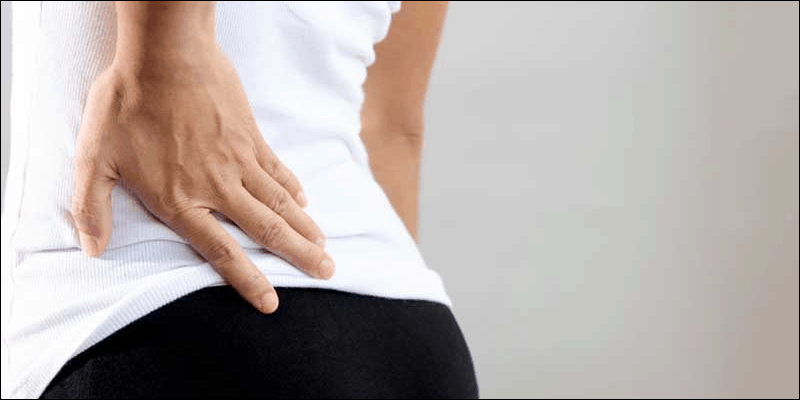
Pathophysiology of lower back pain from gaming
The cause of lower back pain from gaming varies from person-to-person and may affect different tissue(s). Each individual tissue has a potential to present with unique symptoms. However, sometimes different types of tissue present with similar or overlapping symptoms.
Therefore, it is important that your treating physician truly understands anatomy, physiology, and the nature of video games in order to appropriately diagnose your ailment.
Muscle hypertonicity and trigger points
Muscle tone is in reference to a muscle’s level of contraction or electrical impulse from the nervous system. Normal resting tone means the muscle is not contracting, and a muscle at rest will feel loose and soft to the touch.
Hypertonicity means increased resting tone; a muscle is described as hypertonic when it is engaged in a low-level contraction (elevated electrical impulse from the nervous system) absent of conscious control. A hypertonic muscle will feel tense and firmer to the touch.
A spasm, on the other hand, is a full, unconscious muscle contraction. This is different than hypertonicity and will cause moderate-to-severe pain.
Trigger points are the term used for “knots” in the muscle. The name “trigger point” was given because, when stimulated (e.g., pressure, stretching, or contraction), a trigger point will often give rise to pain elsewhere in the body—known as referred pain.
Sprain injuries: ligament and joint capsule
Although uncommon in terms of gaming injuries, the ligaments or joint capsules of the lumbar spine can be injured due to trauma—defined as an acute sprain injury. Ultimately, unless you are gaming while doing something inappropriate, it is unlikely you will experience a gaming-related, acute sprain injury.
When defining the time-frame of an illness or ailment, these are relative measures (note: other resources may use different time ranges):
- Acute: short-term, within 2 weeks
- Subacute: mid-term, in the range of 2-to-6 weeks
- Chronic: long-term, 6 weeks or more
Bony injury
Similar to sprain injuries, acute bone injuries (e.g., fractures or contusions) are uncommon in gaming as they are most often caused by blunt trauma.
Chronic bony change is possible, however. For example, bone spurs may develop near joints sometimes as a result of improper use. Bone spurs are projections that grow off bones in response to inflammation (e.g., osteoarthritis) or improper force (e.g., heel spur from the Achilles tendon).
Although a possible cause of lower back pain from gaming, bone spurs are still uncommon, and appropriate movement will limit the likelihood of developing these ailments. Therefore, it is important to warm-up prior to gaming and to stretch afterwards!
Joint fixation
Joint fixation (also called joint restriction) is exceptionally common and may result from prolonged static position, movement imbalance, or muscle hypertonicity or spasm. Most often, joint fixation will cause both pain and restricted range of motion. A joint fixation occurs when the joint capsule, itself, becomes hypertonic or goes into spasm.
As a result, there is aberrant movement of the fixated joint. Aberrant joint movement then places inappropriate tension on the muscles that move the joint. This will then lead to hypertonicity or spasm which feeds back into the joint fixation—an unfortunate feedback loop that may result in severe pain and significantly limited movement.
When fixation occurs in the spine, the joints above and below the restricted segment will make up for the lack of motion. Significantly increased motion at a joint may lead to instability if left unchecked.
For lower back pain from gaming, one of the joint fixations you may experience is, technically, not part of the lumbar spine; rather this joint fixation occurs in the sacroiliac joint. We have already written about this ailment due to its prevalence and unique pain pattern: see sacroiliac joint dysfunction.
Signs and symptoms
Because we are discussing multiple causes of lower back pain from gaming, the signs and symptoms are not necessarily as precise as some of our other ailment education pages. Generally speaking, however, symptoms may include the following.
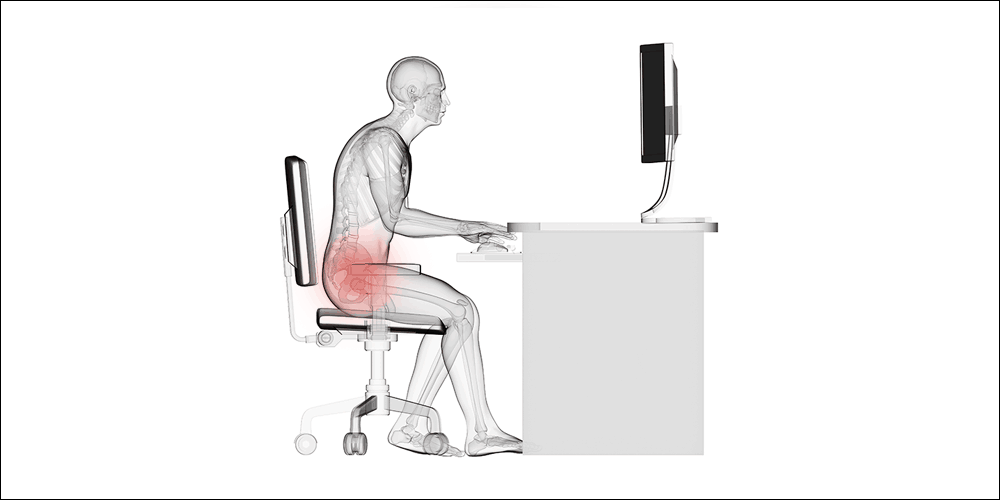
Pain patterns
Pain is a common sign for almost any injury or ailment. However, not all types of pain mean the same thing.
- Sharp: sharp pain may indicate the presence of legitimately sharp pressure (e.g. bone spur pressing on soft-tissue) but may also occur due to adhesion formation in fascia or tendons, or a strained muscle
- Dull ache: most often, trigger points, hypertonicity, and joint fixation present as a dull, aching pain that may refer to other areas of the body (e.g., tension-type headaches)
- Throbbing: throbbing pain tends to follow inflammation where increased fluid volume places pressure on surrounding tissue and feels aggravated by the increased pressure in your arteries when your heart beats
- Burning: burning pain is usually a result of fatigue (lactic acid builds up in your muscles in response to anaerobic exercise or excessive use) but may also indicate nerve pain or nerve healing
Altered range of motion
The lumbar spine can move in 3 planes of motion, totaling 6 specific joint actions (listed below). However, this range of motion may be compromised due to the factors previously listed.
- Hypertonic muscles may pull on a joint or limit movement in the opposing direction (e.g., hypertonic right quadratus lumborum may limit bending the lower back to the left).
- Joint fixation, of course, will also alter joint motion. Joint fixation generally does not mean the joint movement is completely inhibited; rather, the movement is limited due to hypertonicity in the joint capsule.
- Pain patterns will also contribute to altered range of motion. By itself, pain is a limiting factor due to the unwillingness to move—not because of any mechanical limitation. However, pain may be a result of tissue damage or other issues (e.g., hypertonicity or spasm) which most certainly will cause mechanical limitation.
Normal (approximate) lumbar ranges of motion:
- Flexion: 60 degrees; the act of bending forwards
- Extension: 25 degrees; the act of bending backwards
- Bilateral rotation: 25 degrees in both directions; the act of turning side-to-side
- Bilateral lateral flexion: 25 degrees in both directions; the act of side bending
Common mechanisms of injury
Being seated for long periods of time is one of the biggest health concerns for gamers. Human anatomy is not designed to be seated in a chair, and sitting in a chair can cause abnormal stress on your spine.

And worse, the forward lean of the stereotypical gamer will add inappropriate tension to the discs and muscles of the lumbar spine. At the same time, the flexion of the hips may shorten muscles in the front of the body. The muscular imbalances caused by prolonged sitting may cause the following—all hallmark signs of a condition known as lower crossed syndrome:
- Anterior pelvic tilt: forward tipping of the pelvis
- Hyperlordosis: excessive backwards curve of the lumbar spine
- External rotation of the hip: thighs may be rotated outward due to weakness in the gluteus medius and minimus
Muscular imbalance
As previously mentioned, a common ailment associated with lower back pain from gaming is lower crossed syndrome. This condition has a common presentation of muscular imbalance with both tight (hypertonic) muscles and weak (or inhibited) muscles.
- Tight or hypertonic: hip flexors and lumbar erector spinae
- Weak or inhibited: gluteal and abdominal muscles
Prevention and rehabilitation
Lower back pain from gaming alone will usually result from prolonged (poor) posture which may lead to muscular imbalance, hypertonicity and/or trigger points, and joint fixation. Undoubtedly, the most important thing you can do for prevention and rehabilitation of lower back pain from gaming is to monitor your posture; check out our page outlining a more appropriate posture.
If you struggle with posture, sometimes a simple reminder can help to keep your body in a better position. However, prolonged sitting—especially in a poor position—will create or exacerbate the muscular imbalances described earlier.
When this happens, simply thinking about sitting more appropriately may still be ineffective. So, we developed Power-Up Posture with 21 exercises and stretches to help improve your posture.
Power-Up Posture is a comprehensive program to stretch and relax the hypertonic muscles and to stimulate activation and strengthening of the inhibited muscles affected by poor posture.
Through participation of this program, you can effectively prevent these muscular imbalances and reduce lower back pain from gaming and poor posture.
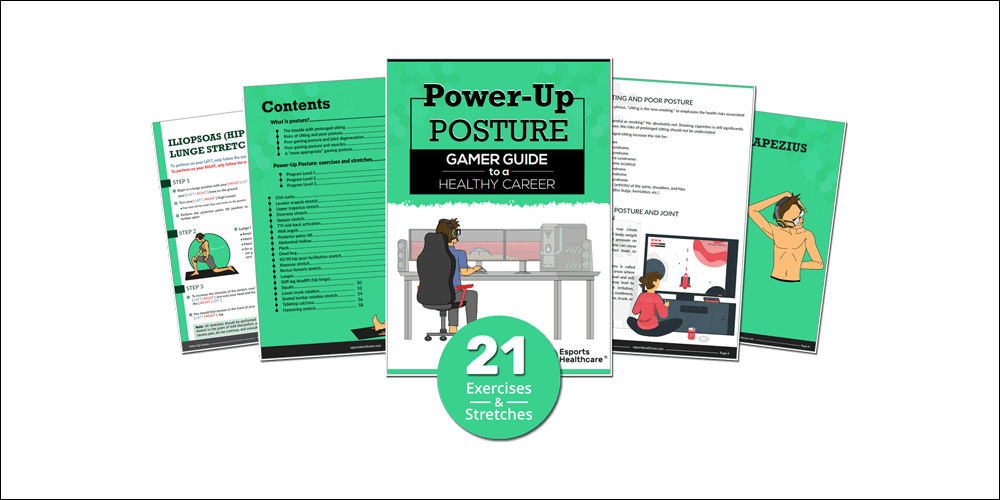
It is also important to take breaks during your gaming sessions to relieve physical and mental-emotional stress.
Additional home-care techniques for relieving tension and improving lower back pain from gaming include:
- Yoga asanas: while it is often believed that yoga is mainly stretching, it is more aligned with teaching body awareness, muscle activation, alignment, mental clarity, and balance
- Chiropractic care: chiropractic interventions aren’t just “cracking” joints; although, adjustments can be incredibly beneficial to relieve lower back pain from gaming
- Manual therapy and massage: muscular release and relaxation will help to reduce the tension in muscles, which can decrease pain
- Physical therapy: aims to utilize muscular release, primarily through manual therapy, stretching, and exercises to help reduce unnecessary and unwanted strain on the muscles involved
- Exercise: specifically, movements designed to improve posture, muscular balance, an efficient, functional movement

